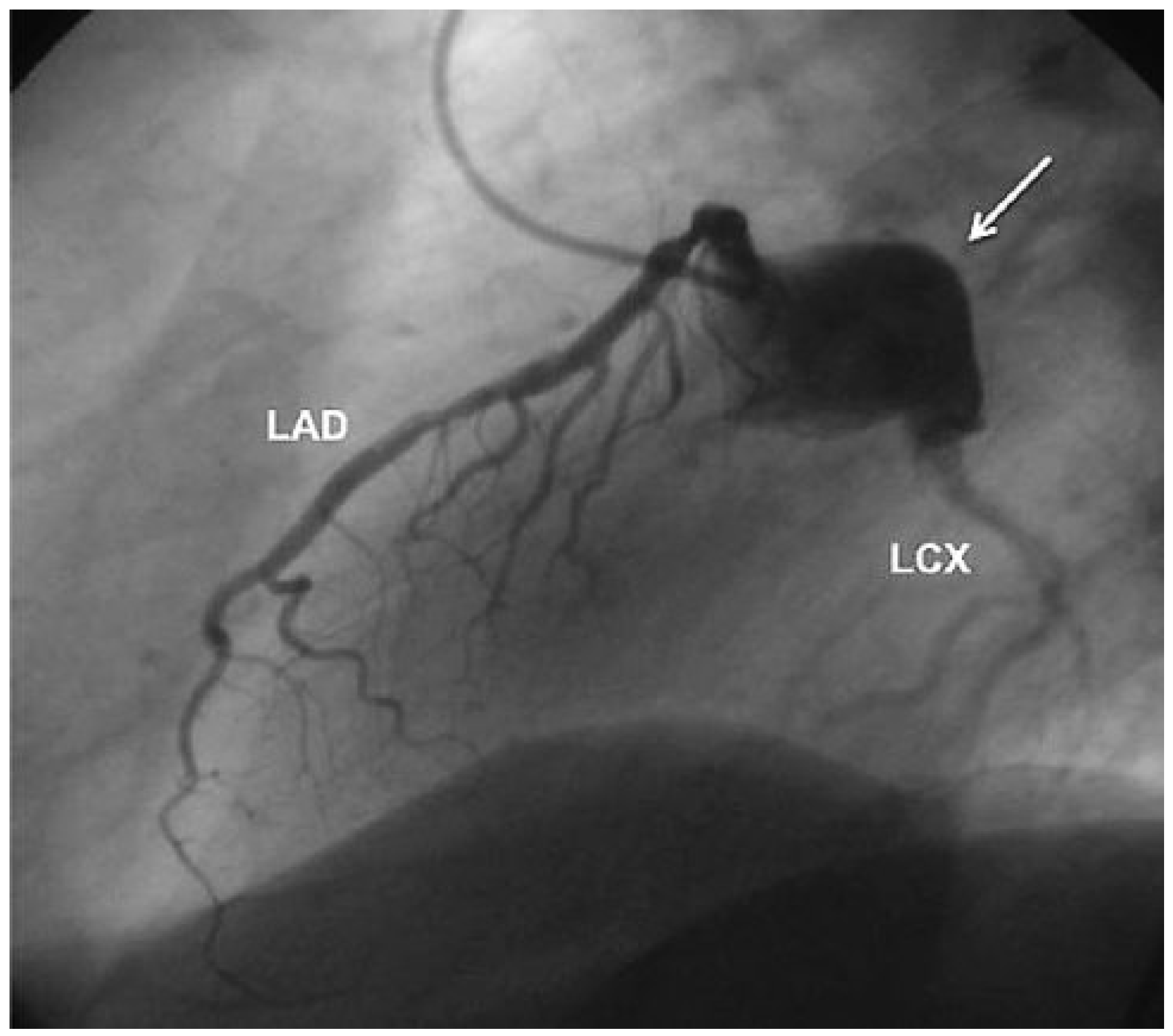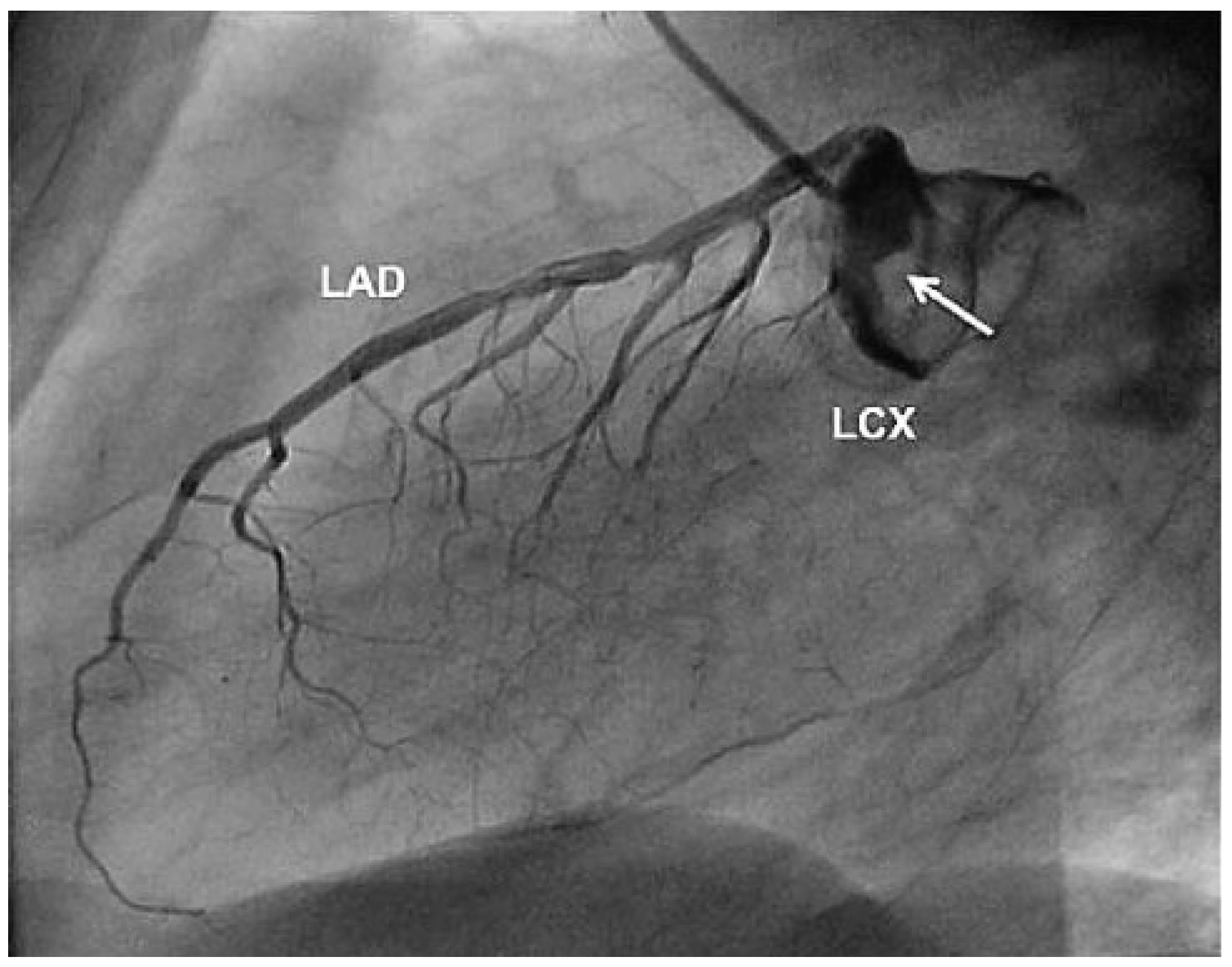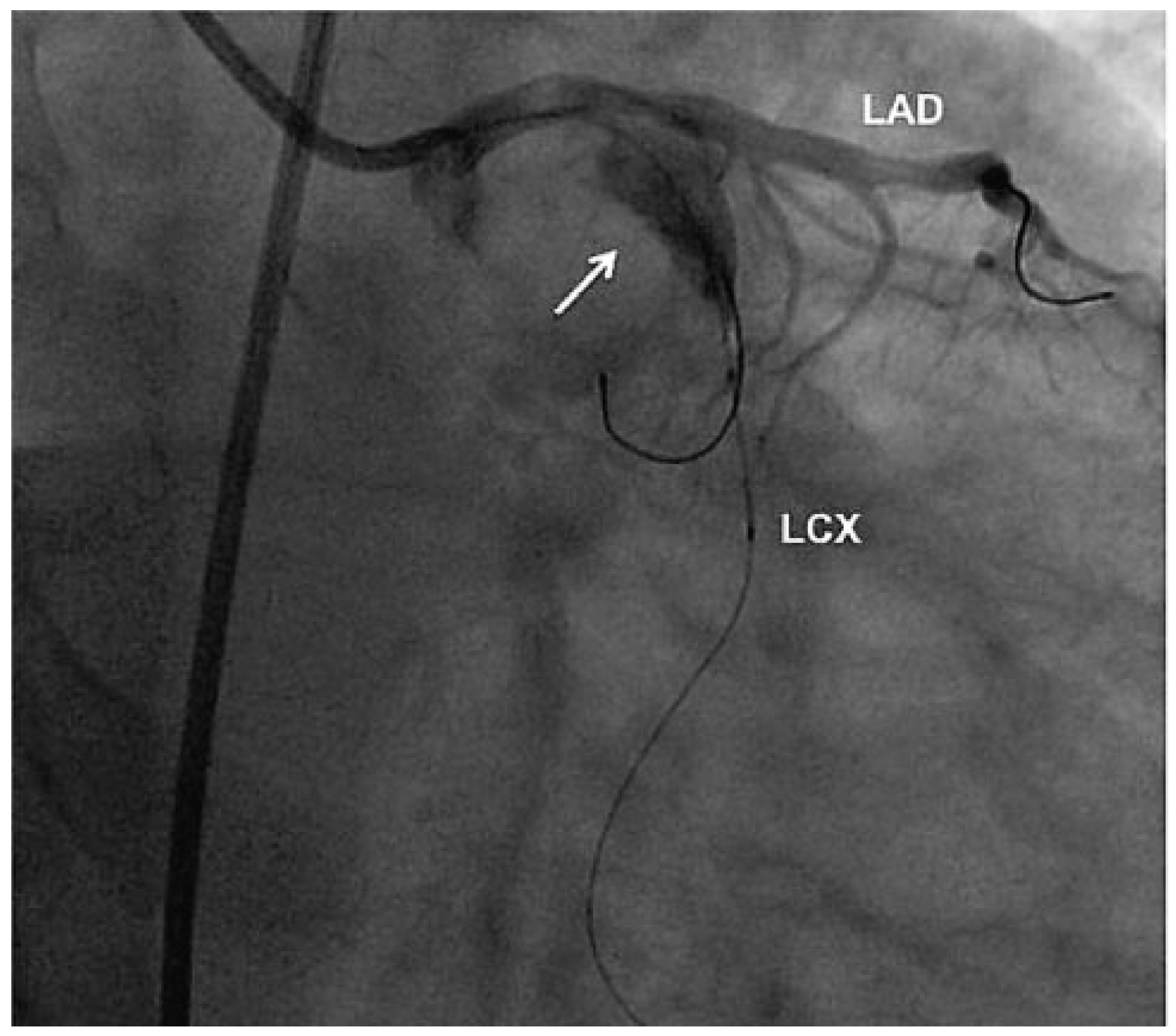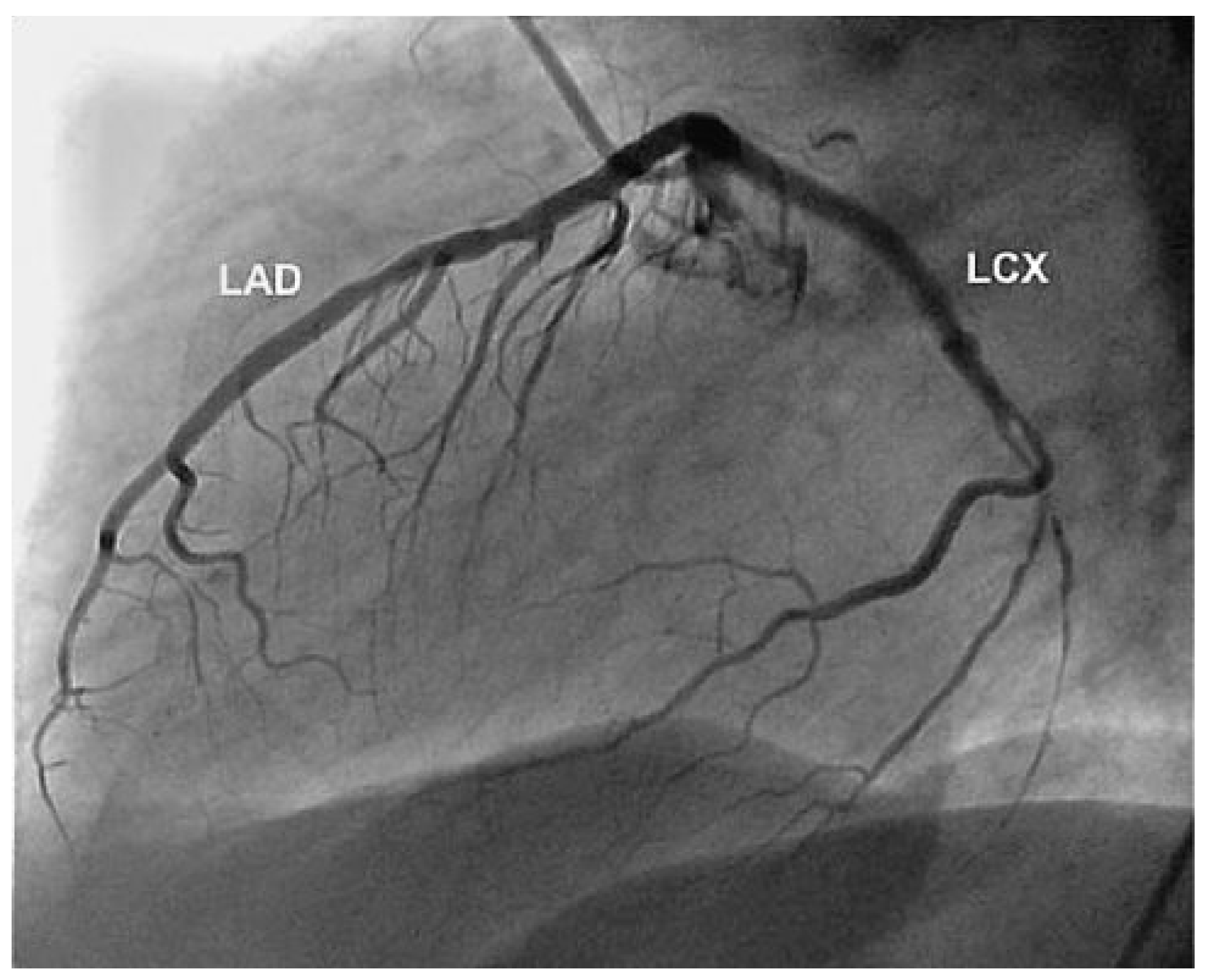Aneurysm of the Left Circumflex Coronary Artery
Conflicts of Interest
References
- Befeler, B.; Aranda, J.M.; Embi, A.; et al. Coronary artery aneurysms. Study of their etiology, clinical course and effect on left ventricular function and prognosis. Am J Med. 1977, 62, 597–607. [Google Scholar] [CrossRef]
- Syed, M.; Lesch, M. Coronary artery aneurysm: a review. Progr Cardiovasc Dis. 1997, 40, 77–84. [Google Scholar] [CrossRef] [PubMed]
- Villines, T.C.; Avedissian, L.S.; Elgin, E.E. Diffuse nonatherosclerotic coronary aneurysms. Cardiol Rev. 2005, 13, 309–311. [Google Scholar] [CrossRef] [PubMed]
- Jamshidi, P.; Resink, T.; Erne, P. Staged stenting of a long aneurysm of a saphenous vein coronary artery bypass graft. J Invasive Cardiol. 2008, 20(1), E1–E5. [Google Scholar] [PubMed]
- Baman, T.S.; Cole, J.H.; Devireddy, C.M.; et al. Risk factors and outcomes in patients with coronary artery aneurysms. Am J Cardiol. 2004, 93, 1549–1551. [Google Scholar] [CrossRef] [PubMed]
- Jamshidi, P.; Mahmoody, K.; Erne, P. Covered stents: a review. Int J Cardiol. 2008, 130(3), 310–318. [Google Scholar] [CrossRef] [PubMed]
- Szalat, A.; Durst, R.; Cohen, A.; Lotan, C. Use of polytatrafluoroethylenecovered stent for treatment of coronary artery aneurysm. Catheter Cardiovasc Interv. 2005, 66, 203–208. [Google Scholar] [PubMed]




© 2010 by the author. Attribution - Non-Commercial - NoDerivatives 4.0.
Share and Cite
Arranto, C.; Auf der Maur, C.; Erne, P. Aneurysm of the Left Circumflex Coronary Artery. Cardiovasc. Med. 2010, 13, 247. https://doi.org/10.4414/cvm.2010.01511
Arranto C, Auf der Maur C, Erne P. Aneurysm of the Left Circumflex Coronary Artery. Cardiovascular Medicine. 2010; 13(7):247. https://doi.org/10.4414/cvm.2010.01511
Chicago/Turabian StyleArranto, Christian, Christoph Auf der Maur, and Paul Erne. 2010. "Aneurysm of the Left Circumflex Coronary Artery" Cardiovascular Medicine 13, no. 7: 247. https://doi.org/10.4414/cvm.2010.01511
APA StyleArranto, C., Auf der Maur, C., & Erne, P. (2010). Aneurysm of the Left Circumflex Coronary Artery. Cardiovascular Medicine, 13(7), 247. https://doi.org/10.4414/cvm.2010.01511



